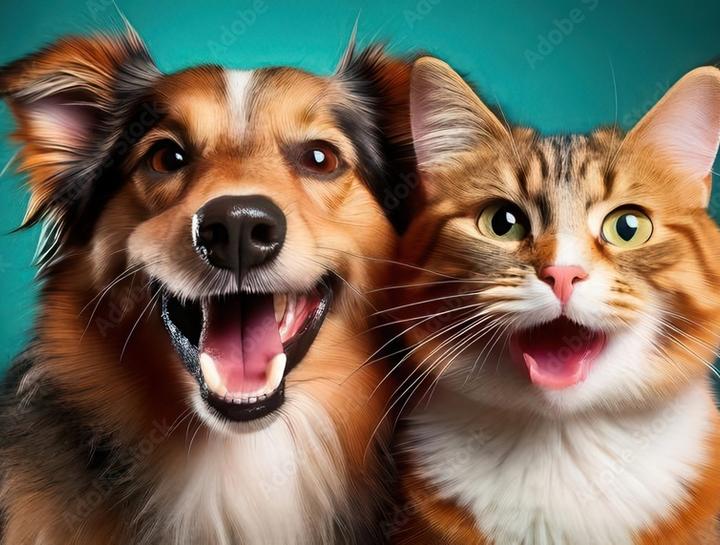Dental Disease – It’s More Than Bad Breath

February is dental awareness month in the veterinary and pet world. Dental disease is a common painful and chronic issue affecting most of our pets. The truth is, 90% of the patients we see over the age of 3 have some degree of dental disease. The big players causing pain and discomfort include periodontal disease, tooth resorption, trauma and fracture of teeth, malocclusion (teeth not aligning properly), and oral inflammation or cancer. Dogs and cats are masters at disguising pain. They still strongly retain their natural instinct of hiding pain at all costs. It is common for pets to have painful oral conditions that we as owners don’t notice. We all know how terrible dental pain can be and pets feel this exact level of intense pain but are able to hide it. We want to bring it to the forefront and prevent suffering. Monthly oral checks by owners at home to detect obvious issues and yearly detailed oral exams with a veterinarian are essential (every 6 months when over age 7). Let’s review the biggest problems we can find.
Periodontal Disease –
This disease process is nearly identical to that in humans. It happens in all dogs and cats but is especially prevalent in smaller breed dogs and brachycephalic pets (dogs and cats with pushed in faces) . The big difference is our oral hygiene routines are very different than that of dogs. Plaque and tartar being to accumulate and trap bacteria, especially along the gumline. As the bacteria set up shop and secrete their nasty agents, inflammation sets in and mineralized chunks of tartar further trap bacteria. Eventually the bacteria and inflammation cause tissue destruction. First the gum tissue is eroded and then the ligaments that hold teeth in place and the bone of the jaw itself is eaten away. In earlier stages of disease this can be reversed with cleaning and periodontal treatments. However, in later stages the treatment is extraction of the tooth to remove the source of pain and infection. Once enough of the periodontal ligament that holds the tooth in place and bone of the jaw is eroded, the mouth with never be comfortable until the tooth is removed. Hallmarks of periodontal disease you can watch for are bad breath, red or swollen gums, in later stages loose teeth with pockets of pus are visible. Daily brushing of teeth at home and using dental treats and chews, wipes or sprays approved by the Veterinary Oral Health Counsil (VOHC) is helpful. If a product exists on this approved list, it is a proven effective product. If it is not on this list, don’t consider it effective.
Tooth Resorption –
Tooth resorption is a poorly understood painful dental condition that affects dogs and even more commonly, cats. More than half of cats over the age of 3 have tooth resorption currently. This process can start at the tooth root and not cause signs of pain. However, as soon as it effects the crown of the tooth or is nearing the crown of the tooth it is exceptionally painful. It is a common cause of tooth fracture in cats. The tooth appears like it has a patch of red and inflamed gum tissue over the white shiny crown. This tissue is an illusion though. When a dental probe is placed on this area it actually erodes deep into the tooth structure. Eventually the tooth is lost and replaced by bone, but this process can take a long time and result in a lot of pain. Remember, most of our pets are masters at hiding this pain but if we are cruel enough to physically touch this spot while your pet is awake you will quickly see how painful it truly is. There are theories that this is some sort of autoimmune process occurring, but we don’t know the cause for sure. The only treatment available is to remove the painful tooth and allow the gum tissue to heal.
Broken Teeth –
This is a very common form of injury we see in dogs. They love to chew on things they shouldn’t (sticks, rocks, random hard and soft things in the house) and on things we give them to keep busy. The sad truth is that most of the bones and chews in the pet store they love so much are causing broken teeth. Deer antlers, rawhides, dried Yak milk bones, nylon bones, and animal bones are all regular causes of painful broken teeth. The only safe chews for dogs are compressed rubber type toys (pack with canned food or some sort of paste / peanut butter and freeze for maximum interest and longevity) or dental chews listed on the VOHC approved product list for dogs and cats mentioned above. Root canals can sometimes be performed for broken teeth but this involves a veterinary dental specialist. The more affordable treatment to resolve pain and tooth root infection is extraction of the tooth. If your pet has a broken tooth down low enough on the crown tooth to expose the pulp canal and nerve, this IS painful. Even if they don’t show it. Any broken tooth with pulp exposure should be removed or treated with a root canal to prevent suffering and complications.
Malocclusion-
Many of the cats and dogs we see have teeth that do not line up properly. This can be intentional from breeding dogs with adorable pushed in faces or just happen randomly due to genetics and how the teeth and jaws form. The crowding of teeth that happens and abnormal forces of teeth hitting each other in a way they should not results in tooth damage and increased periodontal disease from crowding. Extracting broken and traumatized teeth can happen once damage has occurred. However, we can also remove teeth strategically to prevent damage to larger more important teeth we want to preserve or relieve crowding and impact on important teeth. This can be done as a preventative measure to keep the mouth healthy and pain free. Yes, veterinary orthodontics can be done by specialists but the cost is higher than most owners are willing to incur.
Inflammation and Tumors –
Oral tumors happen in both dogs and cats. It is best to find these masses early and remove them. Unfortunately, tumors located in the mouth are notoriously more aggressive and dangerous than tumors located in other parts of the body.
Cats can also be affected by an inflammatory process affecting most of the gum tissue in the mouth called stomatitis. We don’t know the exact underlying cause, but this is another exceptionally painful condition that can affect even young cats. The treatment is to remove some or all of the teeth to reduce the amount of pain and suffering. Believe it or not, pets can live a normal and happy life without their teeth. The key is to have a pain free mouth for a good quality of life.
At Countryside Animal Clinic we are dedicated to keeping your pets healthy and pain free. We recognize how important oral health is to the quality of life of pets. Because of this we honor dental month all year long. We do not offer incentives on pricing only in February for dental care. We will reward you with service savings for booking your procedure in a timely manner after the recommendation is made for one. Ask us more about it! You can find further information and the approved dental products for cats and dogs at the VOHC website (vohc.org). Happy dental month! Now go and smell your pet’s breath.
Sincerely,
Dr. Trisha Metzger, DVM (and all of the fabulous team members at Countryside Animal Clinic)
